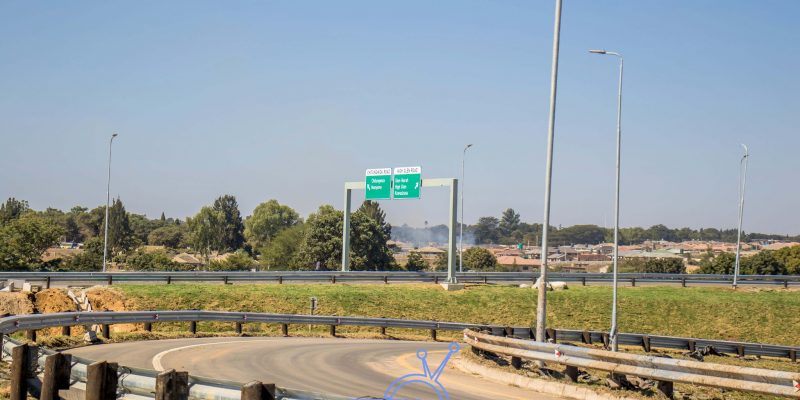Transport Minister Felix Mhona announced in October 2021 that engineers were “on the ground” and construction would start by December that year, and the works would take one year. Fast forward to four years later, the much-anticipated Trabablas Interchange finally opened to traffic, and was heralded by some as a landmark moment for Zimbabwe’s infrastructure development, a viewpoint critics saw as exaggerated. The interchange which was billed as a “modern engineering feat” is said to be instrumental at easing congestion and improving traffic flow in the capital and it cost taxpayers an estimated USD$88 million. As dust settles on its newly paved lanes, a critical question begins to emerge:
Was this investment worth the final result?
To appreciate the value of the Trabablas Interchange, it helps to look at similar projects across the Africa. In South Africa, the Mount Edgecombe Interchange widely regarded as one of the most complex in the southern hemisphere was completed for about USD$78 million at the time offering multi-level, free-flowing traffic movement near Durban. Not only did it cost less, but it also featured advanced design and quicker execution.
By Gamuchirai Mapako
Ghana’s Pokuase Interchange, the largest in West Africa, was completed in 2021 at a cost of approximately USD$84 million. That project connected four major roads, took less than four years to complete, and included works like pedestrian walkways and drainage systems emphasising multi-functionality and inclusivity.
Compared to these examples, Zimbabwe’s USD$88 million interchange, while symbolically significant, raises concerns about proportionality, especially in light of the country’s broader road maintenance and development needs.
Those with a deeper understanding in road construction have taken to their respective platforms to term the interchange an “US$88 million Monument to corruption” “Monument to looting”. One user on X, formerly Twitter went ahead to post (“… proof that the current government doesn’t build infrastructure but they build very expensive metaphors of State Capture”
There’s no denying that the interchange helps to decongest parts of the roadways, infamous for peak-hour jams.
However, questions arise when we look beyond this concentrated zone. With the majority of freight and long-distance traffic moving toward the Masvingo-Beitbridge corridor a critical economic part, the focus on a single interchange may be short-sighted. The government recently announced plans to move to the Willovale, Simon Mazorodze intersection which is said to start immediately.
Bulawayo Road, another key route that connects tourists to Zimbabwe, continues to suffer from wear and tear. With increasing traffic volumes redirected toward this corridor, pressure on these older roads may intensify without corresponding investment. Some buses have reportedly stopped using the road due to its deteriorating state.
Infrastructure is more than simply concrete and asphalt; it also includes strategy. Concentrating large resources in one area of the capital while surrounding and economically critical routes remain underdeveloped may result in uneven growth. Rural roads, feeder highways, and links to agricultural zones continue to lag in terms of quality and accessibility.
Focusing heavily on flagship projects often side-lines these more “invisible” but equally essential parts of the road network. This creates a perception deserved or not that priorities are skewed toward appearances rather than thorough planning.
That said, the Trabablas Interchange does bring undeniable benefits. It improves connectivity within Harare, reduces commute times, and demonstrates an ability to execute large-scale engineering works. These are wins worth acknowledging.
The real test lies not in what has been built, but in what comes next. If the Trabablas Interchange is seen as a blueprint for improved transparency, cost-efficiency, and inclusive infrastructure development, what can be expected of the upcoming projects? Will they be satisfactory or will the following projects as critics put it, be an active crime scene .
In the end, good infrastructure should not only move cars, but also move the nation forward economically, socially, and equitably. Compared to road networks in Africa, does Zimbabwe stand a change, can the interchange be deemed a money well spent project?







Comments